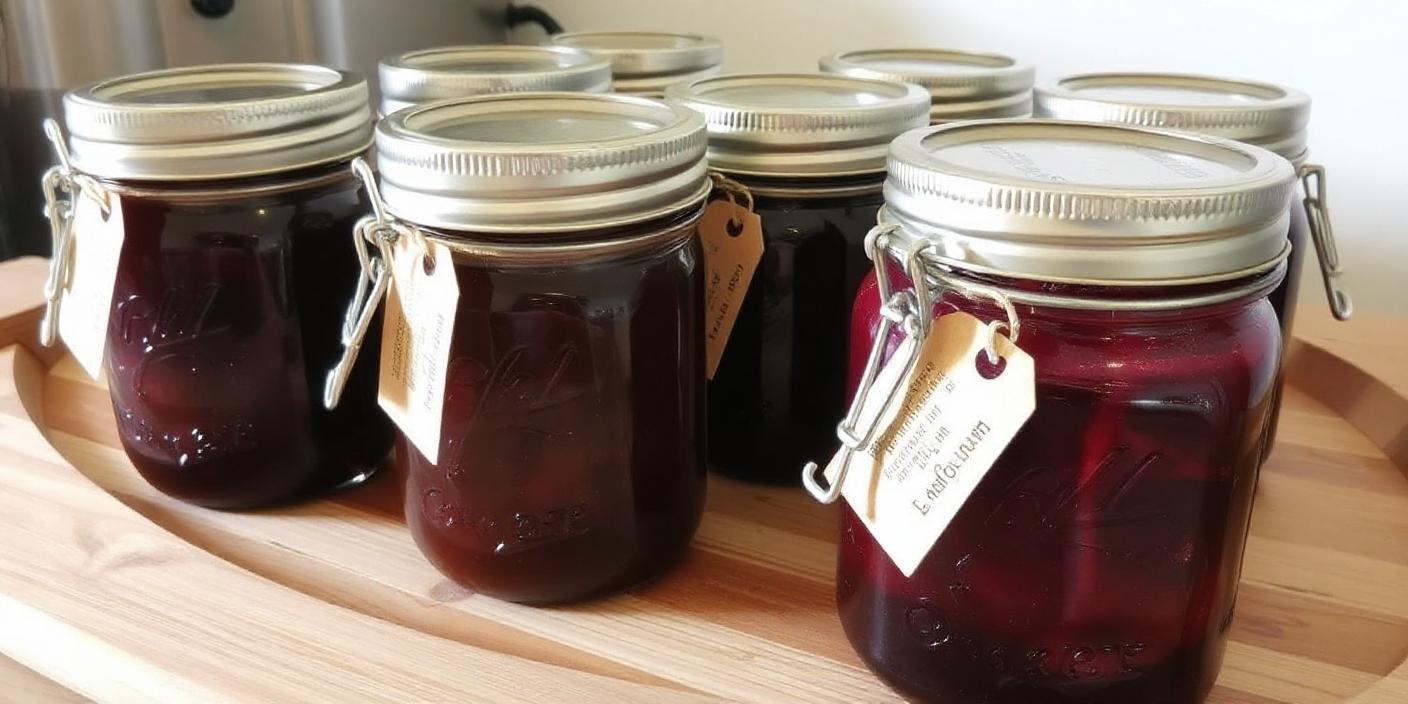Home canning has become increasingly popular as more people look to preserve their favorite fruits and create homemade jams and jellies. One common question that arises is, can I use lower sugar in Sure Jell recipes? The desire to reduce sugar intake for health reasons has led many to explore lower-sugar options in canning. In this article, we’ll dive into the role of sugar in Sure Jell recipes, how you can safely reduce it, and what adjustments you might need to make to ensure your jams and jellies turn out perfectly.
What is Sure Jell?
Sure Jell is a type of pectin, a natural thickening agent used in making jams and jellies. Pectin helps to gel the fruit mixture, giving it the consistency we expect from a good jam. There are different types of Sure Jell, including regular and low-sugar versions, each designed to work with specific amounts of sugar.
In traditional recipes, sugar plays a crucial role not only in sweetening but also in the preservation and gelling process. However, with the rise in health consciousness, many people are interested in reducing the sugar content in their preserves. If you’re curious about the benefits of reducing sugar in your diet, this Healthline article on the benefits of reducing sugar provides insightful information.
The Importance of Sugar in Sure Jell Recipes
The Role of Sugar
Sugar is more than just a sweetener in Sure Jell recipes. It acts as a preservative, helps achieve the desired texture, and enhances the fruit’s natural flavors. In the traditional canning process, sugar works with pectin to form the gel that thickens your jams and jellies. Reducing the sugar content without making the necessary adjustments can result in runny preserves that do not set properly.
Understanding the science behind how pectin and sugar work together can help you make informed decisions when adjusting recipes. If you want to dive deeper into how pectin functions, check out this detailed explanation of the science of pectin.
Regular vs. Low-Sugar Sure Jell
Regular Sure Jell is formulated to work with a high sugar content, usually requiring equal amounts of sugar and fruit. In contrast, Low-Sugar Sure Jell is specifically designed to work with reduced sugar levels, providing a solution for those looking to lower their sugar intake without compromising the quality of their preserves.
When using regular Sure Jell, reducing the sugar content too much can prevent the jam or jelly from setting. However, using the low-sugar version allows you to use significantly less sugar or even alternative sweeteners, while still achieving a good set and preserving the jam’s shelf life.
Can You Reduce Sugar in Sure Jell Recipes?
Adjusting Sugar Levels
The question many ask is, can I use lower sugar in Sure Jell recipes? The answer is yes, but with some considerations. If you are using regular Sure Jell, it’s important to follow the recipe closely. For those looking to reduce sugar, the low-sugar version of Sure Jell is your best bet. This version is designed to work with less sugar and still achieve a proper set.
For a successful reduction in sugar, it’s recommended to follow tested recipes specifically designed for low-sugar or no-sugar pectin. This ensures that your jam or jelly will set properly and remain shelf-stable. For those new to low-sugar canning, the Ball Canning website offers low sugar jam recipes that are a great starting point.
Using Low-Sugar or No-Sugar Sure Jell
If you choose to use Low-Sugar Sure Jell, the process is quite similar to using the regular version, with a few adjustments:
- Ratio of Fruit to Pectin: Follow the specific instructions for low-sugar pectin, as it may require a different ratio of fruit to pectin compared to regular Sure Jell.
- Additional Ingredients: You may need to add calcium water or lemon juice to help the pectin set when using less sugar.
- Sweetener Alternatives: Consider using natural sweeteners like honey or agave syrup, but be aware that these can alter the flavor and texture.
By carefully following these guidelines, you can successfully reduce the sugar in your Sure Jell recipes while still creating delicious and well-set preserves.
Flavor and Texture Considerations When Reducing Sugar
Flavor Changes
Reducing sugar in your jams and jellies can lead to changes in flavor. With less sugar, the natural tartness of the fruit may become more pronounced. This can be a positive change for those who prefer a less sweet preserve, but it’s something to keep in mind if you are accustomed to traditional, sweeter jams.
Texture Adjustments
The texture of your jam or jelly might also change when you reduce the sugar content. Lower sugar levels can result in a softer set, making the preserves less firm. To counteract this, ensure you’re using the right type of pectin and consider adding a bit more to help achieve the desired consistency. Alternatively, you can cook the fruit mixture slightly longer to reduce excess liquid and help the jam set more firmly.
Health Benefits of Lower Sugar in Sure Jell Recipes
Reducing sugar in your Sure Jell recipes has several health benefits. High sugar intake has been linked to various health issues, including obesity, diabetes, and heart disease. By lowering the sugar content in your homemade preserves, you can enjoy your favorite jams and jellies with less guilt and more health benefits.
Lower-sugar recipes are also suitable for those with specific dietary restrictions, such as individuals with diabetes, who need to manage their sugar intake carefully. This trend towards healthier eating is becoming more common, and home canning provides a way to control exactly what goes into your food.
Common Mistakes to Avoid When Reducing Sugar
Over-Reducing Sugar
One of the most common mistakes when attempting to lower sugar in Sure Jell recipes is reducing the sugar too much. This can prevent the jam or jelly from setting properly. It’s crucial to follow recipes designed for low-sugar pectin or to experiment cautiously, adjusting small amounts at a time.
Ignoring Pectin Type
Using the wrong type of pectin for your desired sugar level can lead to disappointing results. Ensure you’re using low-sugar pectin if you’re aiming to reduce sugar in your recipe. Regular pectin requires a higher sugar content to gel correctly, so substituting low-sugar pectin is key.
Not Testing for Doneness
When reducing sugar, the texture of your preserves can be more challenging to perfect. Be sure to test your jam or jelly for doneness by placing a small amount on a cold plate. If it wrinkles when pushed with a finger, it’s ready. Otherwise, it may need more cooking time.
The Smoked BBQ Chicken Thighs: The Ultimate Guide is an excellent resource for those who enjoy preparing flavorful homemade dishes alongside healthier condiments like low-sugar jams.
Frequently Asked Questions (FAQs)
1. Can I use honey or other natural sweeteners instead of sugar in Sure Jell recipes?
Yes, you can use honey or other natural sweeteners, but they will affect the flavor and texture. It’s best to follow a recipe designed for alternative sweeteners to ensure success.
2. What happens if I reduce the sugar too much in a Sure Jell recipe?
Reducing sugar too much can prevent the jam or jelly from setting properly. It’s important to use low-sugar pectin and follow tested recipes to avoid this issue.
3. Is it safe to can low-sugar or no-sugar jams and jellies?
Yes, it’s safe to can low-sugar or no-sugar jams and jellies as long as you follow proper canning procedures and use the correct type of pectin.
4. How do I know if my jam or jelly has set properly with less sugar?
You can test the set by placing a small amount on a cold plate. If it wrinkles when pushed, it’s ready. If not, it may need more time to cook.
5. Can I use regular Sure Jell with less sugar, or do I need to use the low-sugar version?
It’s best to use the low-sugar version of Sure Jell when reducing sugar. Regular Sure Jell requires a higher sugar content to gel correctly.

